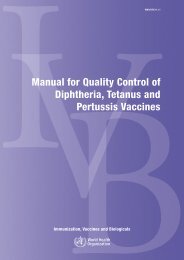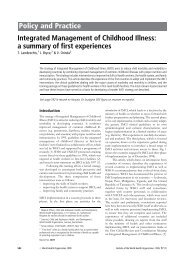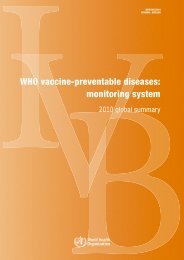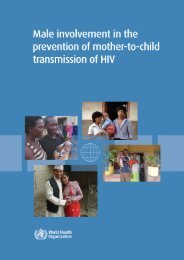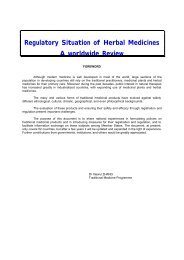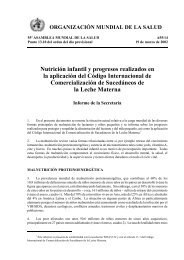IPDE - Extranet Systems - World Health Organization
IPDE - Extranet Systems - World Health Organization
IPDE - Extranet Systems - World Health Organization
Create successful ePaper yourself
Turn your PDF publications into a flip-book with our unique Google optimized e-Paper software.
82 A. W. Loranger<br />
summarizes them for one popular instrument, the Schedule for Affective<br />
Disorders and Schizophrenia-Lifetime version (SADS-L). The findings<br />
indicate moderate, but at times disappointing, stabilities that are not consistently<br />
superior to many of those obtained in this study with the PDs. It<br />
should be noted, however, that four of the five studies involved longer<br />
time intervals than six months. The one study within that timeframe<br />
reported a kappa of 0.63 for the presence or absence of any SADS-L<br />
diagnosis. This compares with 0.62 in DSM-III-R and 0.59 in ICD-10<br />
for the presence or absence of any specific PD on the <strong>IPDE</strong>. The studies<br />
in Table 1 did not repon an overall weighted kappa, thus precluding<br />
comparisons based on that statistic. Another potentially relevant difference<br />
is that in most of these studies, the initial and repeat interviews were<br />
conducted by different interviewers. One study,s however, did not find<br />
significant differences in stability when the same and different interviewers<br />
were used, another study6repmed an inconsistent effect.<br />
There is very little literature on the temporal stability of criteria-based<br />
PDs diagnosed with semistructured interviews. There appear to be only<br />
three studies that involved more than a brief test-retest interval. One was<br />
based on an early trial version of the PDE? which is no longer extant.<br />
The other twolO.'l reported on the stability of the Structured Interview for<br />
DSM-111 Personality Disorders (SIDP). Pfohl et repeated the SIDP<br />
in 36 depressed inpatients after 6 to 12 months. The kappa values, which<br />
ranged from 0.16 to 0.84, are problematic because of the small sample<br />
sizes of the individual disorders. Similar findings were obtained by van<br />
den Brink in the Netherlands."<br />
The belief that interviewers are perfectly interchangeable would seem<br />
naive in view of the potential influence that the age, sex, and personality<br />
of an inte~ewer might have on the information provided by a subject.<br />
The assumption made by those who use semistructured interviews is that<br />
such factors ordinarily are not a major source of error. In planning the<br />
present study, consideration was given to a design in which half of the<br />
interviews would be repeated by the same examiner and half by a different<br />
examiner. This would have helped to determine how much the interviewers<br />
themselves, in addition to their rating decisions, contributed to<br />
the instability of the measures. However. concerns about scheduling and<br />
the availability of interviewers influenced the decision to use the same<br />
interviewers whenever possible. As a result, 93% of the interviews were<br />
given by the same examiner on both occasions.<br />
A second interview, whether conducted by the same or a different<br />
person, may be contaminated by the experience of the first interview.




